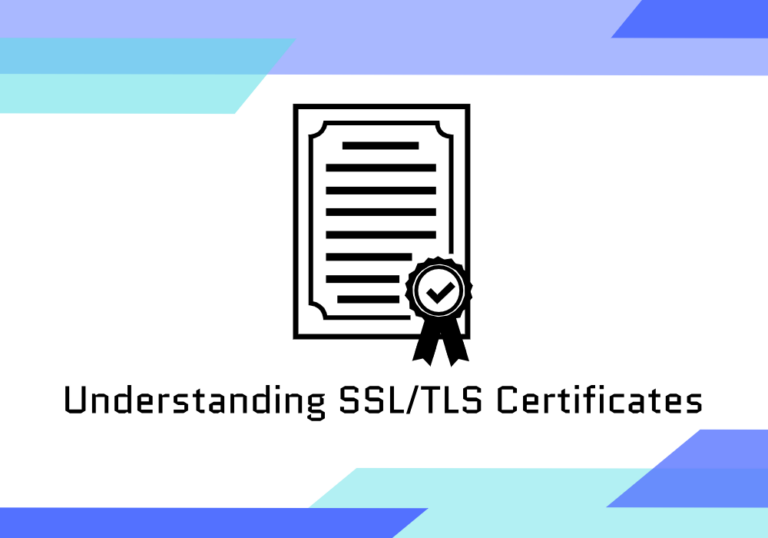In today’s interconnected world, SSL/TLS certificates are indispensable for securing data transfer and establishing trust between devices and systems. These digital documents rely on cryptography to prove the identity of an entity, such as a server, client, or device, and are a cornerstone of protocols like VPNs, Wi-Fi, and corporate networks. This article explores the technical aspects of SSL/TLS certificates, their types, applications, and the mechanisms for assigning, verifying, and signing them.
What Are SSL/TLS Certificates?
A certificate is a digital document issued by a trusted Certificate Authority (CA) that binds a public key to the identity of an entity. This identity can be a person, a device, or an organization. Certificates contain critical details such as the entity’s name or domain (subject), the issuing CA (issuer), a public key for encryption and digital signatures, validity dates, a unique serial number, and the CA’s signature to ensure authenticity.
Types and Uses of Certificates
Certificates come in various types tailored to specific security needs. SSL/TLS certificates, for example, encrypt communications over HTTPS and secure VPN connections. Client certificates authenticate individual users or devices to servers, playing a vital role in corporate network security. Meanwhile, Wi-Fi certificates authenticate devices connecting to secure networks, often replacing less secure methods like passwords. Specialized certificates, such as those for code signing, ensure the integrity and authenticity of software.
Root and intermediate certificates form the backbone of certificate trust chains. Root certificates, held by trusted authorities, anchor the trust, while intermediate certificates act as intermediaries between root and end-user certificates. This hierarchical structure enhances security by limiting the exposure of root keys.
Applications in VPNs, Wi-Fi, and Corporate Networks
VPNs
Certificates in VPNs authenticate both servers and clients, ensuring secure data transfer through encrypted tunnels. Protocols like IPsec and SSL/TLS leverage certificates for mutual authentication, key exchange, and encryption, protecting the integrity and confidentiality of transmitted data.
For step-by-step guides for configuration of VPNs on MikroTiks please click here
Wi-Fi Networks
For Wi-Fi, certificates enable robust security by authenticating devices to access points without relying on passwords. Protocols such as WPA3-Enterprise utilize SSL/TLS certificates to enhance authentication and encryption, reducing vulnerabilities and preventing unauthorized access.
A step-by-step example of 802.1X Wi-Fi authentication with certificates demonstrates how this process works:
- A device attempts to connect to a secure Wi-Fi network using 802.1X.
- The device sends an authentication request to the network’s access point.
- The access point forwards the request to the authentication server, typically a RADIUS server.
- The server requests the device’s client certificate and validates it against its list of trusted Certificate Authorities.
- If the certificate is valid, the server sends its own certificate to the device for mutual authentication.
- Both parties establish a secure session by exchanging encrypted keys, ensuring the connection is protected.
This process ensures that only devices with valid SSL/TLS certificates issued by trusted authorities can access the network, significantly enhancing security.
SSL/TLS Certificates in Web Security
SSL/TLS certificates are essential for securing web traffic. When a user connects to a website, the server presents its SSL/TLS certificate to prove its identity. The process typically involves the following steps:
- The user’s browser sends a request to the server, initiating an SSL/TLS handshake.
- The server responds with its certificate, containing its public key and identity details.
- The browser verifies the certificate’s authenticity by checking the CA’s digital signature and ensuring the certificate is not expired or revoked.
- Upon successful verification, the browser and server exchange encrypted session keys.
- The connection is established, and all data exchanged is encrypted.
SSL/TLS certificates not only protect sensitive data like passwords and credit card information but also enhance user trust by displaying security indicators, such as the padlock icon in the browser address bar. Websites using Extended Validation (EV) SSL certificates further assure users by showing the organization’s name in the address bar.
Corporate Networks
Within corporate environments, SSL/TLS certificates facilitate secure communication between clients and servers. They are used to authenticate devices and users, encrypt email and file transfers, and ensure only authorized entities access network resources.
Protocols and Standards
Numerous protocols depend on SSL/TLS certificates to secure communication. TLS/SSL protocols encrypt web traffic and VPN connections, while IPsec secures VPN communication. The 802.1X standard underpins secure network access in Wi-Fi environments, and S/MIME protocols safeguard email communications.
Certificate Lifecycle: Assignment, Verification, and Signing
Assigning a certificate can involve self-signing for internal purposes or obtaining one from a CA for public-facing services. A self-signed certificate, while suitable for internal use, does not offer the same level of trust as a CA-signed certificate, which is verified and trusted by external entities.
Verification of a certificate ensures its authenticity and validity. This process involves checking the CA’s digital signature, confirming that the certificate has not expired, and verifying that it has not been revoked. Revocation checks are often performed using a Certificate Revocation List (CRL) or the Online Certificate Status Protocol (OCSP).
The signing process begins with the entity generating a Certificate Signing Request (CSR), which includes the public key and identity details. The CA validates the CSR and signs it using its private key, creating a trusted certificate that binds the entity’s identity to its public key.
Key Differences Between Certificates
Certificates differ in their validation levels and intended purposes. Domain Validation (DV) certificates verify domain ownership, while Organization Validation (OV) certificates also authenticate organizational details. Extended Validation (EV) certificates provide the highest level of trust by requiring rigorous checks. Certificates can also vary in scope; single-domain certificates secure one domain, wildcard certificates cover multiple subdomains, and multi-domain certificates protect several distinct domains.
Conclusion
SSL/TLS certificates are the foundation of secure communication across VPNs, Wi-Fi, and corporate networks. They establish trust, authenticate identities, and protect data integrity and confidentiality. By understanding their types, applications, and lifecycle, organizations can implement effective security measures. Leveraging trusted CAs and proper protocols is essential to creating a secure and reliable digital environment.




